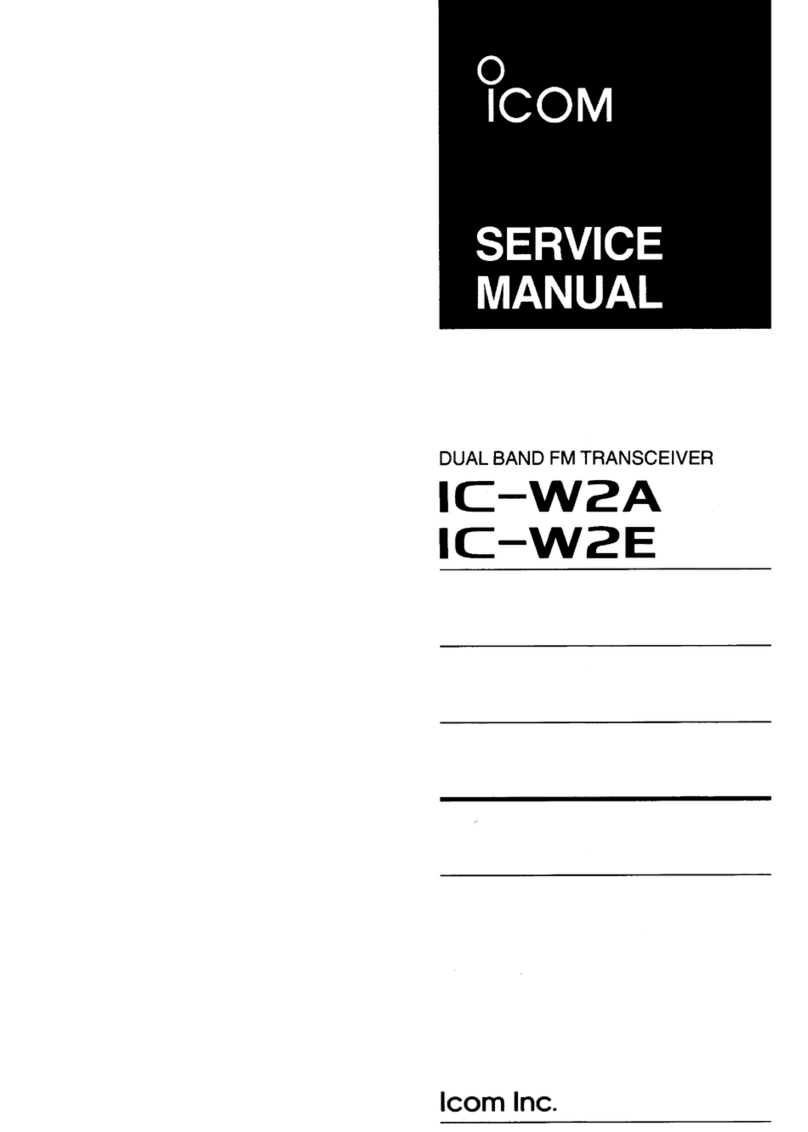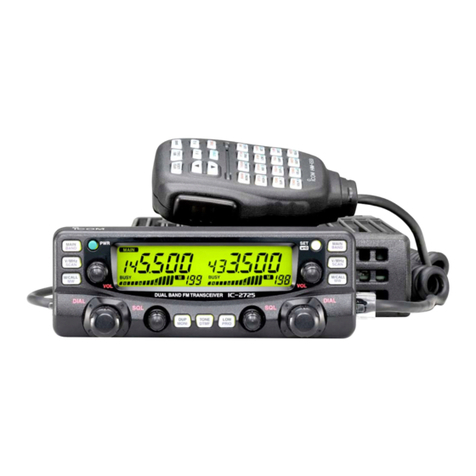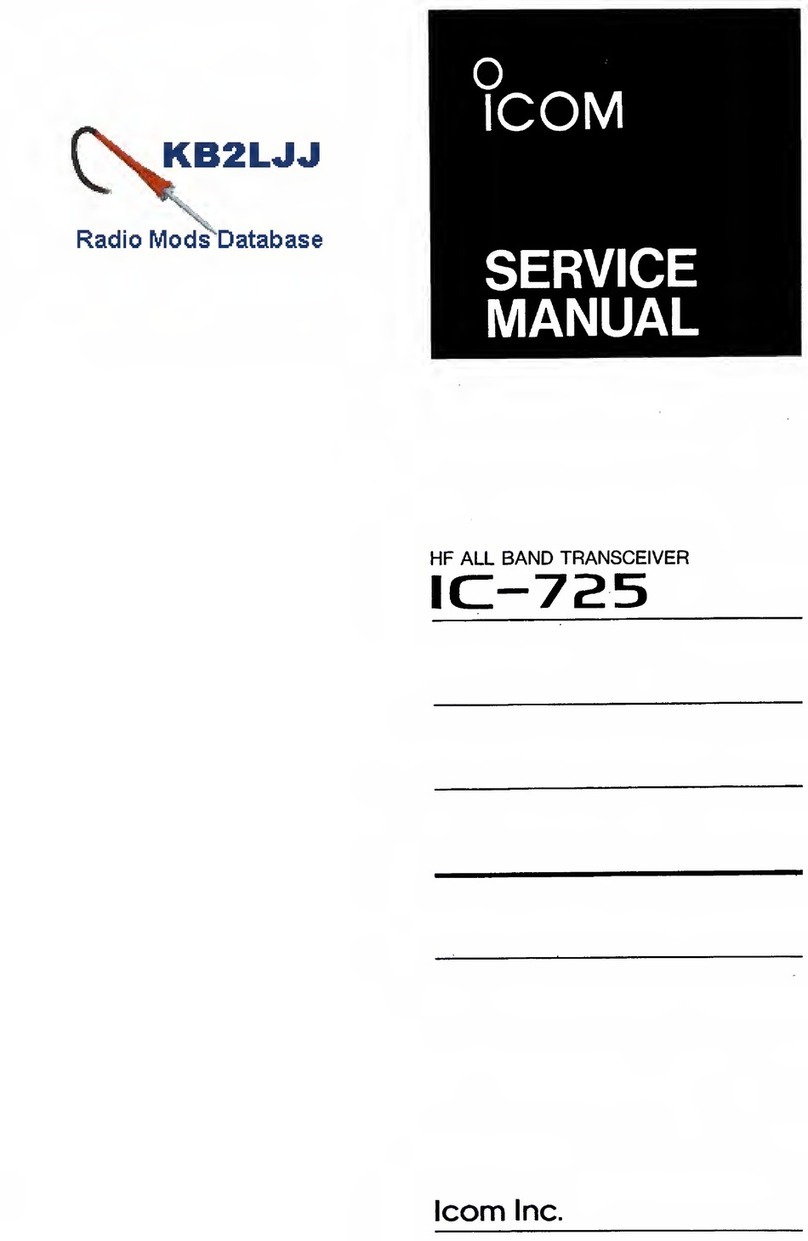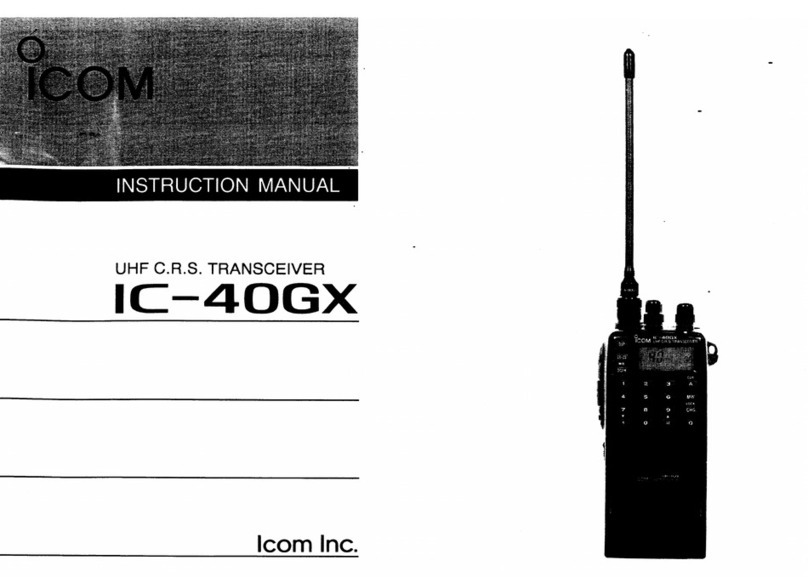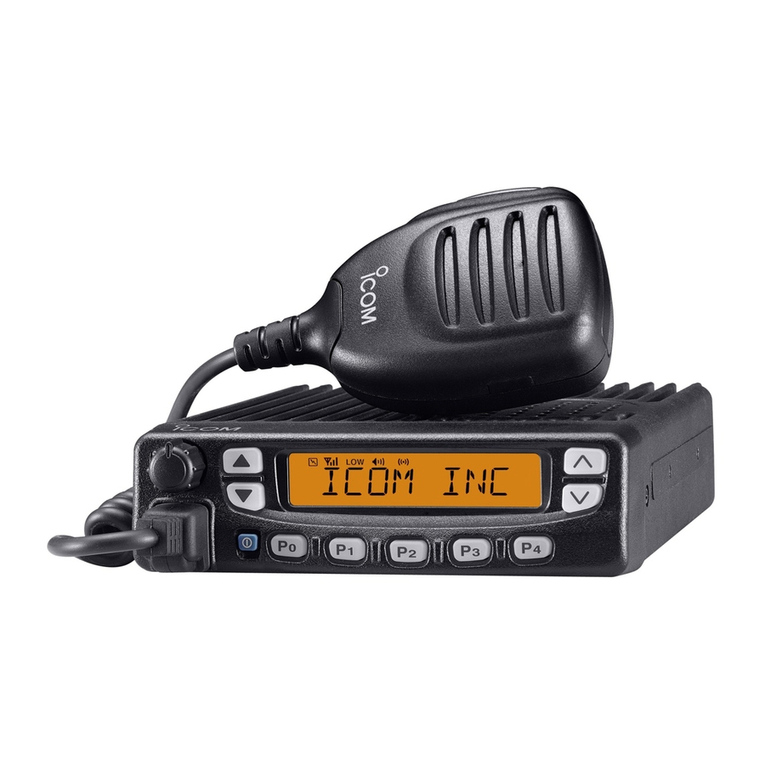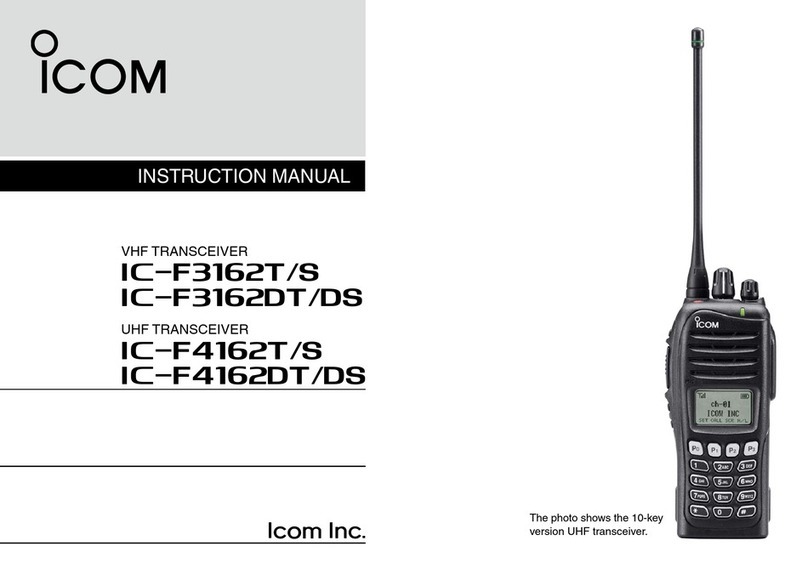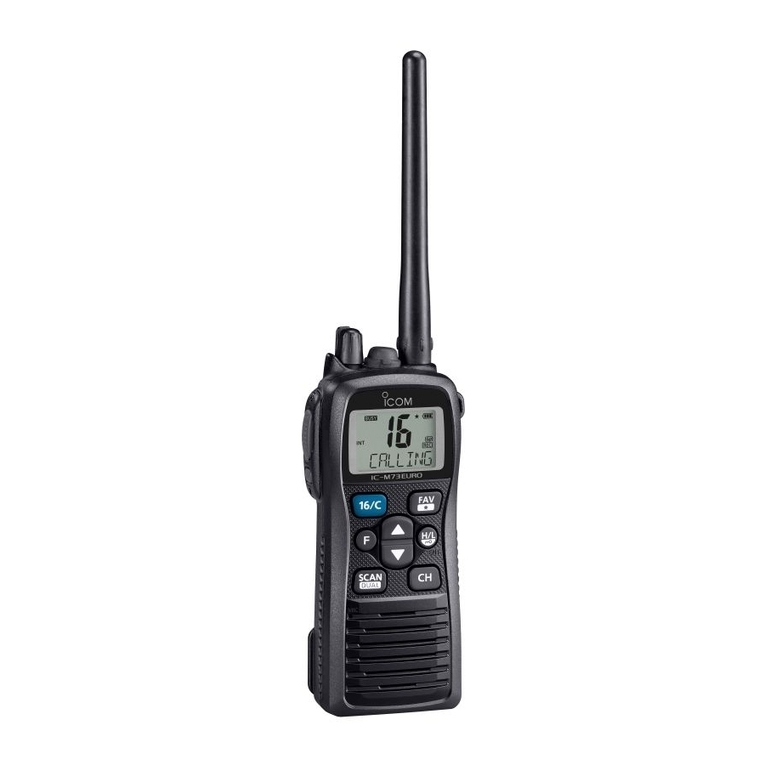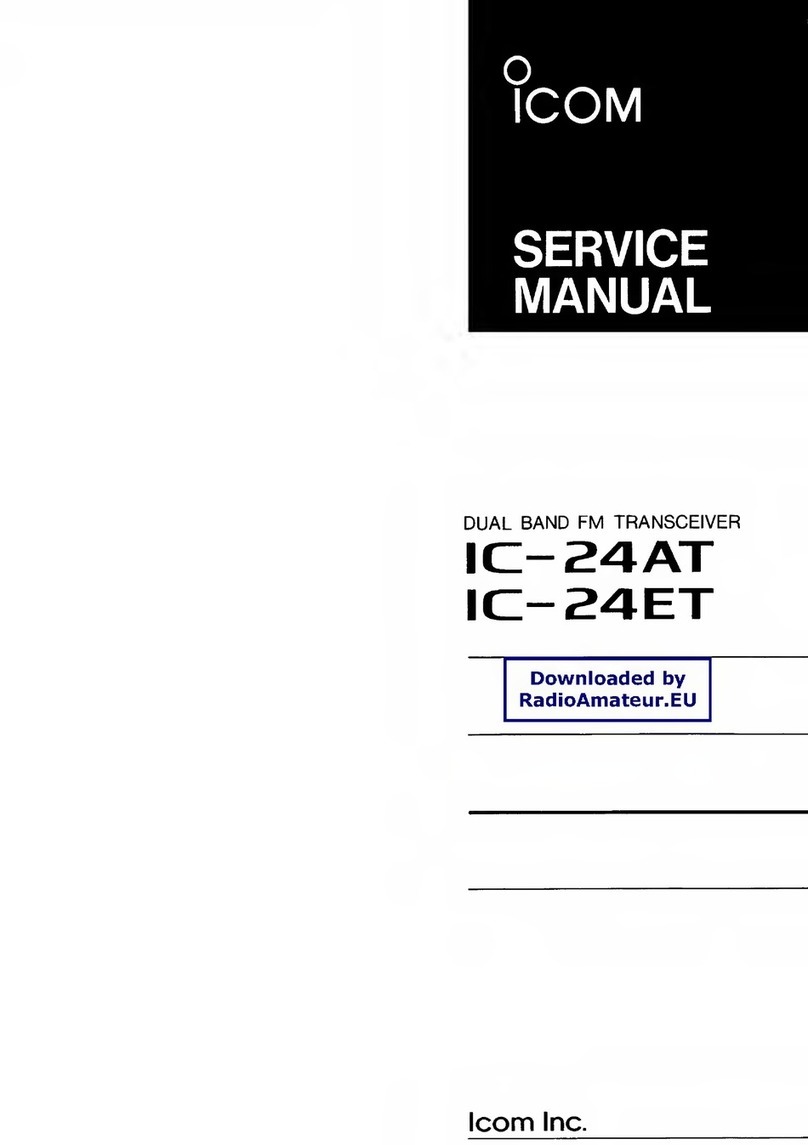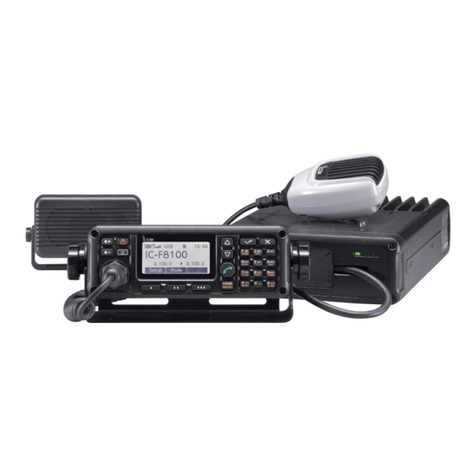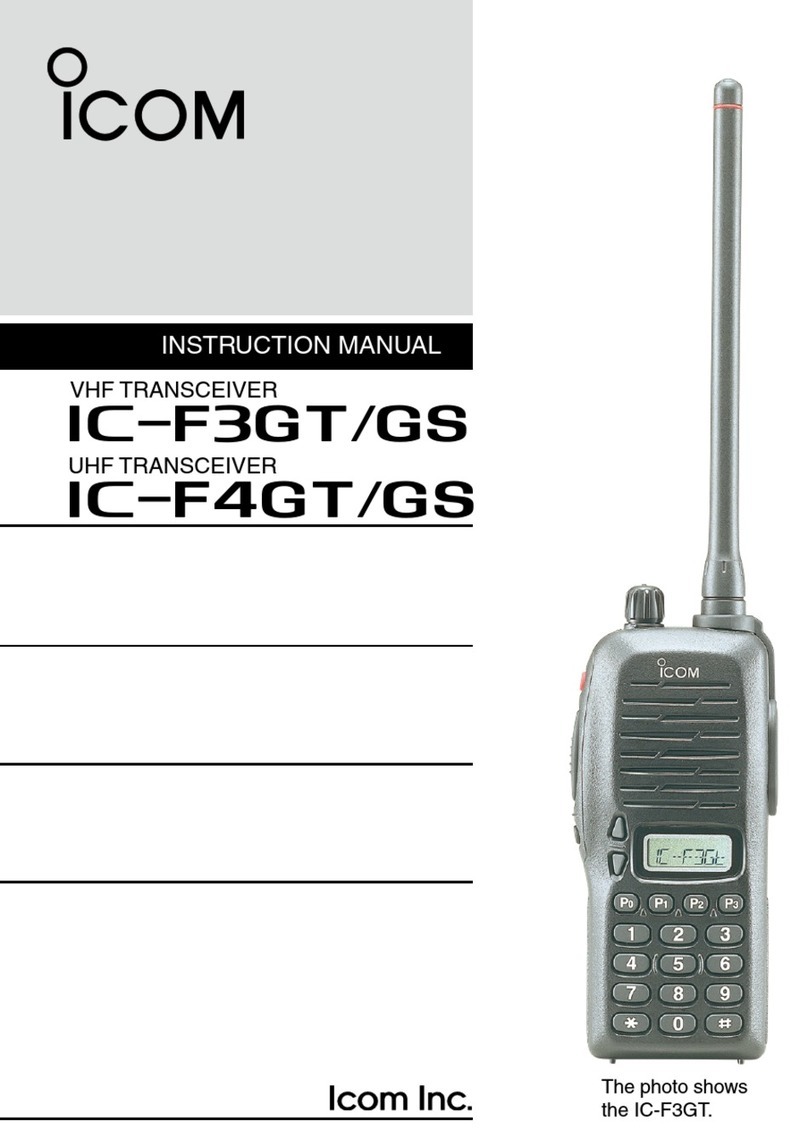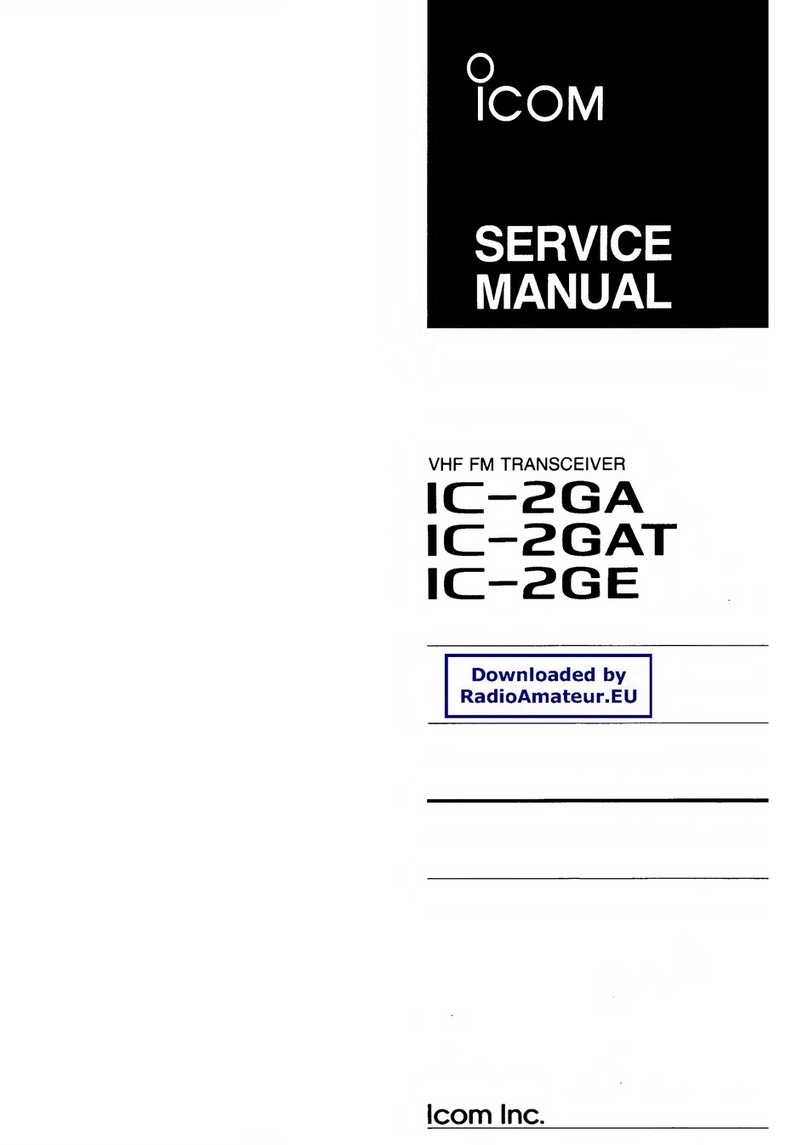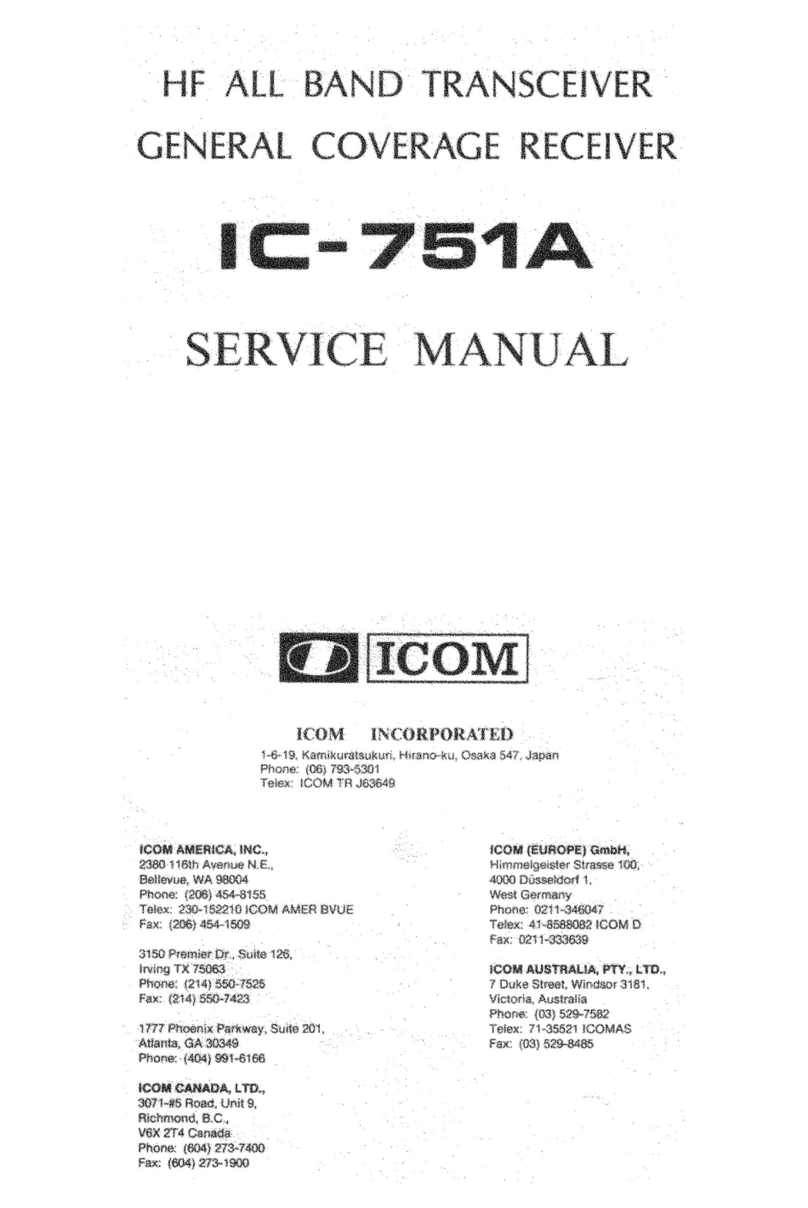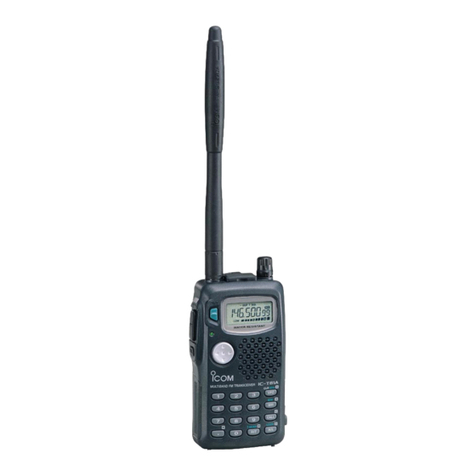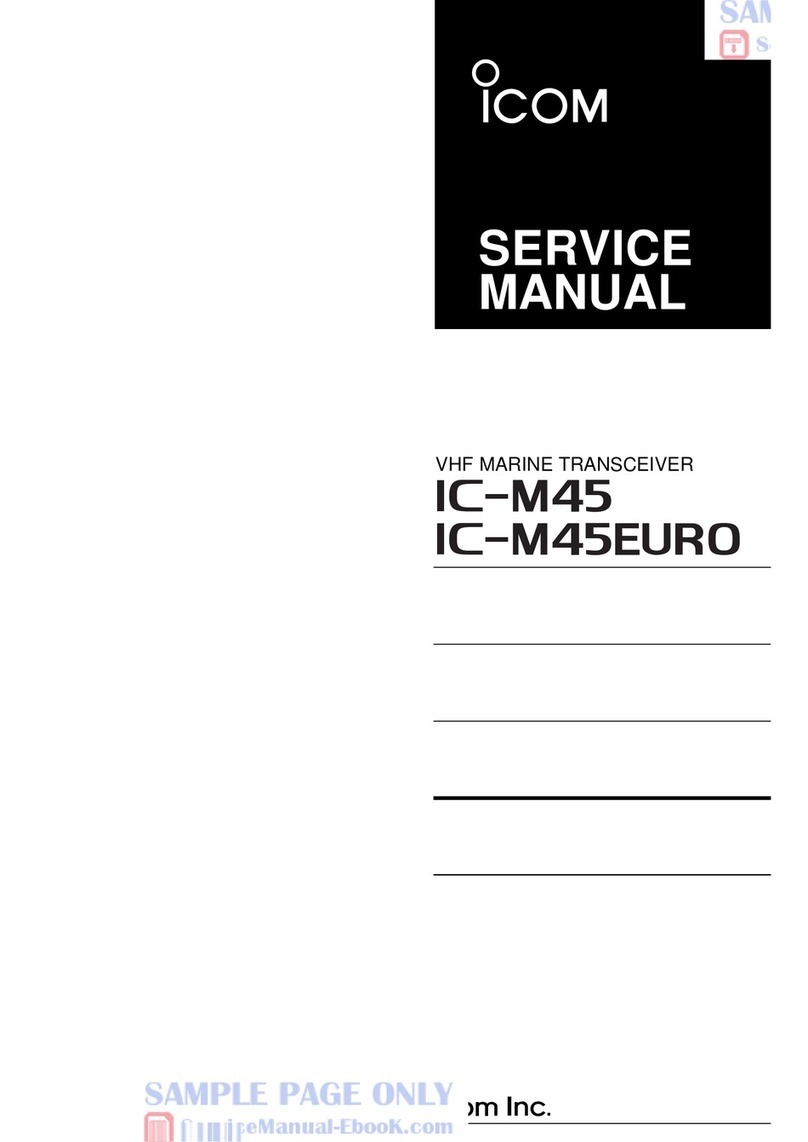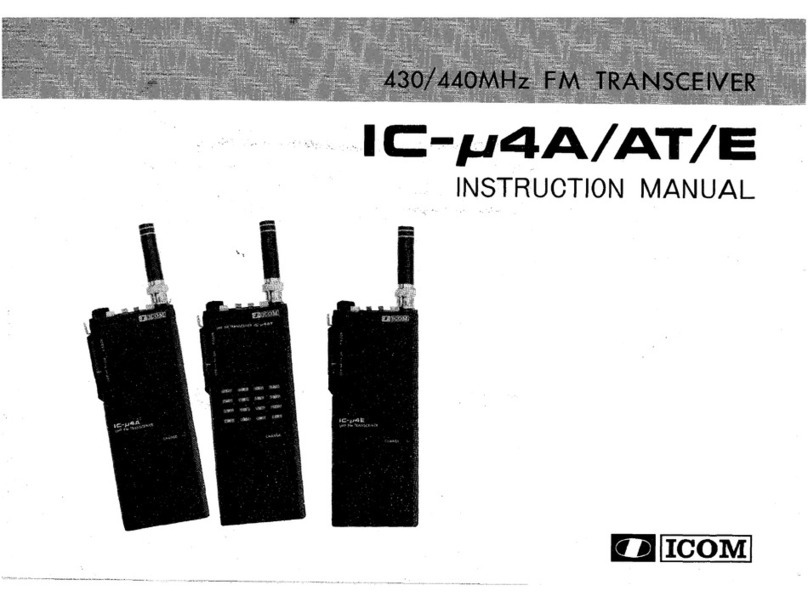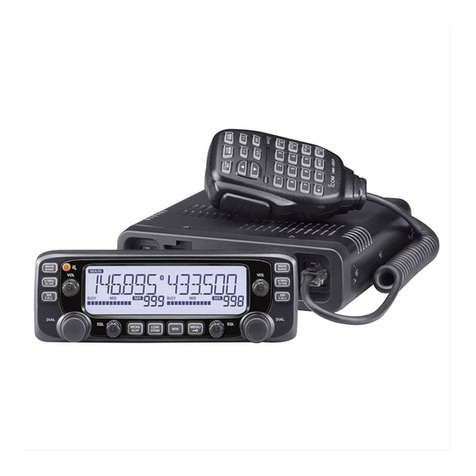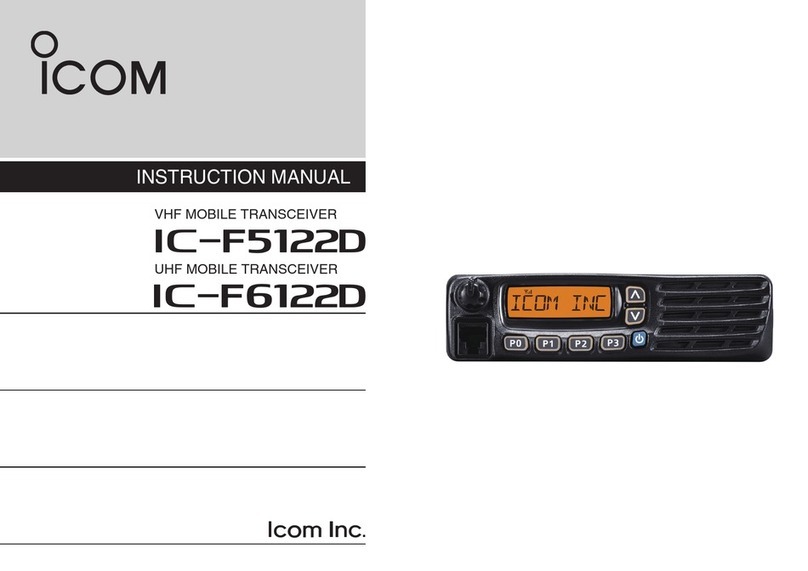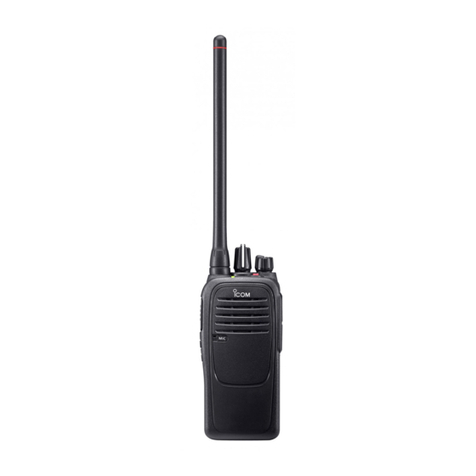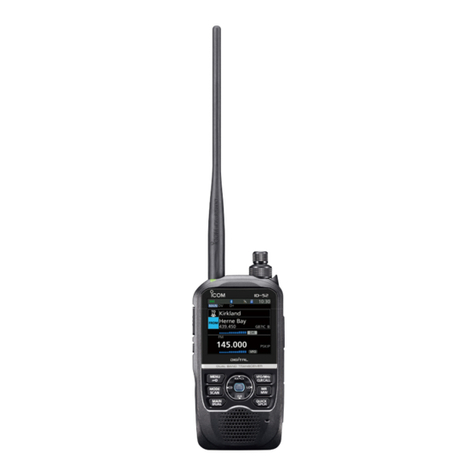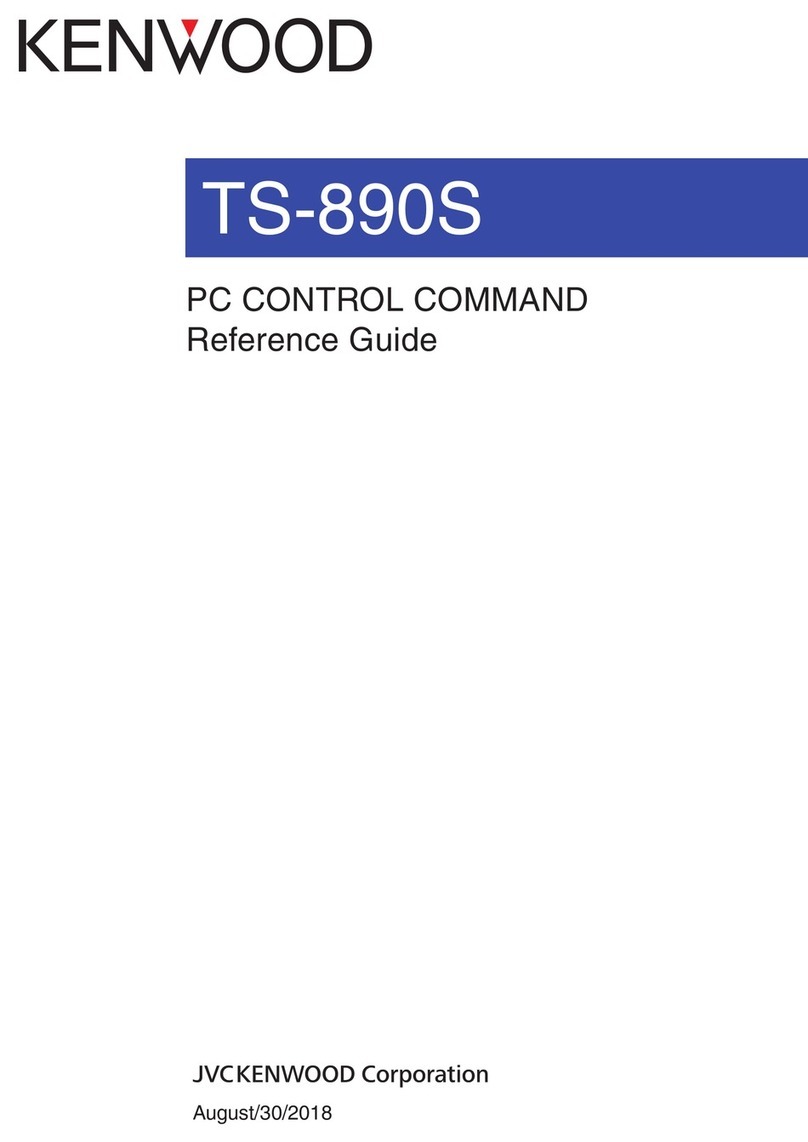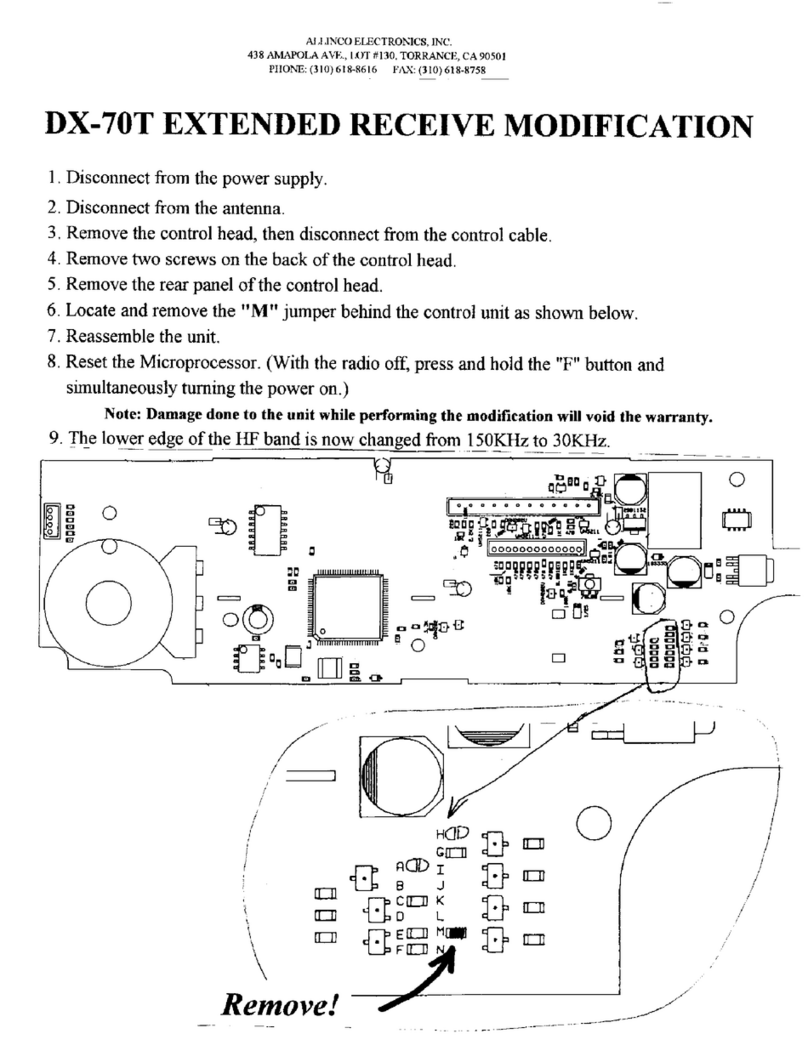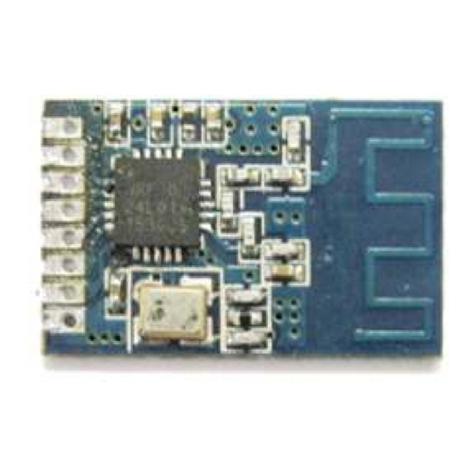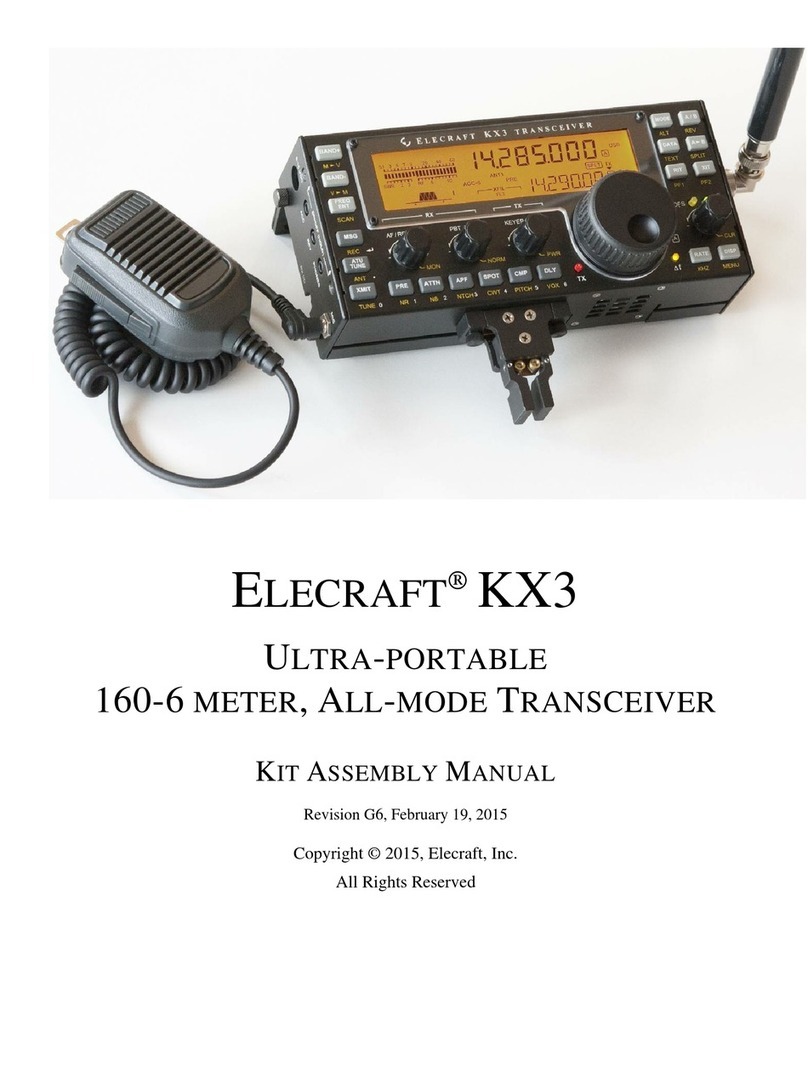Icom IC-V82 User manual

INSTRUCTION MANUAL
iV82
VHF TRANSCEIVER
This device complies with Part 15 of the FCC rules. Operation is sub-
ject to the following two conditions: (1) This device may not cause
harmful interference, and (2) this device must accept any interference
received, including interference that may cause undesired operation.

FOREWORD
Thank you for purchasing this Icom product. The IC-V82
VHF
TRANSCEIVER
is designed and built with Icom’s superior tech-
nology and craftsmanship. With proper care, this product
should provide you with years of trouble-free operation.
We want to take a couple of moments of your time to thank
you for making your IC-V82 your radio of choice, and hope
you agree with Icom’s philosophy of “technology first.” Many
hours of research and development went into the design of
your IC-V82.
DD
FEATURES
❍7Wof high transmit output power
❍CTCSS and DTCS encoder/decoder stan-
dard
❍Optional Digital modulator/demodulator
❍Optional DTMF decoder
❍MIL-STD810 grade durability
IMPORTANT
READ ALL INSTRUCTIONS carefully and completely
before using the transceiver.
SAVE THIS INSTRUCTION MANUAL— This in-
struction manual contains important operating instructions for
the IC-V82.
EXPLICIT DEFINITIONS
WORD DEFINITION
RWARNING!
CAUTION
NOTE
Personal injury, fire hazard or electric shock
may occur.
Equipment damage may occur.
Recommended for optimum use. No risk of
personal injury, fire or electric shock.
Icom, Icom Inc. and the logo are registered trademarks of Icom
Incorporated (Japan) in the United States, the United Kingdom, Ger-
many, France, Spain, Russia and/or other countries.
i

ii
RWARNING! NEVER hold the transceiver so that the
antenna is very close to, or touching exposed parts of the
body, especially the face or eyes, while transmitting. The
transceiver will perform best if the microphone is 5 to 10 cm
(2 to 4 inches) away from the lips and the transceiver is verti-
cal.
RWARNING! NEVER operate the transceiver with a
headset or other audio accessories at high volume levels.
Hearing experts advise against continuous high volume op-
eration. If you experience a ringing in your ears, reduce the
volume or discontinue use.
NEVER connect the transceiver to a power source that is
DC fused at more than 5 A. Accidental reverse connection will
be protected by this fuse, but higher fuse values will not give
any protection against such accidents and the transceiver will
be ruined.
NEVER attempt to charge alkaline or dry cell batteries. Be
aware that external DC power connections will charge batter-
ies inside the battery case. This will damage not only the bat-
tery case but also the transceiver.
DO NOTpush the PTT when not actually desiring to trans-
mit.
Place the unit in a secure place to avoid inadvertent use by
children.
DO NOToperate the transceiver near unshielded electrical
blasting caps or in an explosive atmosphere.
AVOID using or placing the transceiver in direct sunlight or
in areas with temperatures below –10°C (+14˚F) or above
+60°C (+140˚F).
The use of non-Icom battery packs/chargers may impair
transceiver performance and invalidate the warranty.
Even when the transceiver power is OFF, a slight current still
flows in the circuits. Remove the battery pack or case from
the transceiver when not using it for a long time. Otherwise,
the battery pack or installed Ni-Cd batteries will become ex-
hausted.
For USA only:
Caution: Changes or modifications to this transceiver, not ex-
pressly approved by Icom Inc., could void your authority to
operate this transceiver under FCC regulations.
PRECAUTION

iii
SUPPLIED ACCESSORIES
■Supplied Accessories
qAntenna* . . . . . . . . . . . . . . . . . . . . . . . . . . . . . . . . . . . . . 1
wBelt clip (with screws) . . . . . . . . . . . . . . . . . . . . . . . . . . . 1
eAC Adapter . . . . . . . . . . . . . . . . . . . . . . . . . . . . . . . . . . . 1
rBattery pack*/Battery case* . . . . . . . . . . . . . . . . . . . . . . 1
tBattery charger*. . . . . . . . . . . . . . . . . . . . . . . . . . . . . 1 set
*Not supplied with some versions.
e
q
wr
t

iv
CAUTION
To ensure that your exposure to RF electromagnetic en-
ergy is within the FCC allowable limits, always adhere to
the following guidelines:
• DO NOT operate the radio without a proper antenna at-
tached, as this may damage the radio and may also cause
you to exceed FCC RF exposure limits. A proper antenna is
the antenna supplied with this radio by the manufacturer or
an antenna specifically authorized by the manufacturer for
use with this radio.
• DO NOT transmit for more than 50% of total radio use time
(“50% duty cycle”). Transmitting more than 50% of the time
can cause FCC RF exposure compliance requirements to
be exceeded. The radio is transmitting when the “TX indica-
tor” is lit. You can cause the radio to transmit by pressing
the “PTT” switch.
• ALWAYS use Icom authorized accessories (antennas, bat-
teries, belt clips, speaker/mics, etc.). Use of unauthorized
accessories can cause the FCC RF exposure compliance
requirements to be exceeded.
• ALWAYS keep the antenna at least 2.5 cm (1 inch) away
from the body when transmitting, and only use the Icom
belt-clips which are listed in this manual when attaching the
radio to your belt, etc. To provide the recipients of your
transmission the best sound quality, hold the antenna at
least 5 cm (2 inches) from your mouth, and slightly off to one
side.
The information listed above provides the user with the
information needed to make him or her aware of RF ex-
posure, and what to do to assure that this radio operates
within the FCC RF exposure limits of this radio. Electro-
magnetic Interference/Compatibility. During transmis-
sions, your Icom radio generates RF energy that can
possibly cause interference with other devices or sys-
tems. To avoid such interference, turn off the radio in
areas where signs are posted to do so. DO NOT operate
the transmitter in areas that are sensitive to electromag-
netic radiation such as hospitals, aircraft, and blasting
sites.
SAFETY TRAINING INFORMATION

v
TABLE OF CONTENTS
FOREWORD .................................................................................... i
IMPORTANT..................................................................................... i
EXPLICIT DEFINITIONS.................................................................. i
PRECAUTION ................................................................................. ii
SUPPLIED ACCESSORIES ........................................................... iii
SAFETY TRAINING INFORMATION.............................................. iv
TABLE OF CONTENTS .............................................................. v–vi
QUICK REFERENCE................................................................... I–V
■Preparation............................................................................... I
■Your first contact..................................................................... III
■Repeater operation ................................................................ IV
■Programming memory channels............................................. V
1 ACCESSORIES...................................................................... 1–2
■Accessory attachment............................................................. 1
2PANEL DESCRIPTION .......................................................... 3–7
■Switches, controls, keys and connectors ................................ 3
■Function display ...................................................................... 6
3BATTERY PACKS................................................................ 8–12
■Battery pack replacement ....................................................... 8
■Battery caution ........................................................................ 9
■Charging NOTE ...................................................................... 9
■Battery charging .................................................................... 10
■Battery case (optional for some versions) ............................ 12
4BASIC OPERATION........................................................... 13–16
■Power ON.............................................................................. 13
■VFO mode selection.............................................................. 13
■Setting a frequency ............................................................... 13
■Setting audio/squelch level ................................................... 15
■Receive and transmit ............................................................ 15
■Display type........................................................................... 16
■Key lock function ................................................................... 16
5 REPEATER OPERATION .................................................. 17–19
■General ................................................................................. 17
■Offset frequency.................................................................... 17
■Subaudible tones .................................................................. 18
■Auto repeater function (USA versions only) .......................... 19
■Repeater lockout ................................................................... 19
6MEMORY/CALL OPERATION........................................... 20–25
■General description ............................................................... 20
■Selecting a memory channel................................................. 20
■Selecting the call channel ..................................................... 20
■Programming the memory/call channels............................... 21
■Channel name programming................................................. 22
■Memory transferring .............................................................. 22
■Memory bank selection ......................................................... 24
■Memory bank setting............................................................. 24
■Transferring bank contents.................................................... 25
7DTMF MEMORY................................................................. 26–27
■Programming a DTMF code.................................................. 26
■Transmitting a DTMF code.................................................... 27
■DTMF transmission speed .................................................... 27

vi
8SCAN OPERATION............................................................ 28–31
■Scan types ............................................................................ 28
■Programmed scan................................................................. 28
■Memory scan..........................................................................29
■Skip channels........................................................................ 30
■Priority watch......................................................................... 30
■Scan resume condition.......................................................... 31
9SUBAUDIBLE TONES....................................................... 32–35
■Tone squelch......................................................................... 32
■Pocket beep operation.......................................................... 34
■Tone scan.............................................................................. 35
10PAGER/CODE SQUELCH (Required Optional UT-108).. 36–39
■Pager function....................................................................... 36
■Code programming ............................................................... 36
■Pager operation..................................................................... 38
■Code squelch........................................................................ 39
11 DIGITAL MODE OPERATION
(Required Optional UT-118)...............................................40–56
■Digital mode operation .......................................................... 40
■Call sign programming .......................................................... 40
■Digital voice mode operation ................................................. 43
■When receiving a Digital call ................................................. 44
■Break-in communication ....................................................... 45
■EMR communication ............................................................. 46
■Pocket beep operation .......................................................... 46
■Digital squelch functions ....................................................... 47
■Digital monitor ....................................................................... 47
■Low-speed data communication ........................................... 48
■About D-STAR system .......................................................... 49
■Repeater call sign programming ........................................... 50
■Other setting items ................................................................ 51
■GPS operation ...................................................................... 55
12OTHER FUNCTIONS ......................................................... 57–67
■SET MODE............................................................................ 57
■INITIAL SET MODE .............................................................. 61
■Weather channel operation (USAversions only)................... 66
■CPU reset.............................................................................. 67
■Partial reset........................................................................... 67
13CLONING ................................................................................. 68
14OPTIONAL UNIT................................................................ 69–70
■Optional UT-108/118 installation ........................................... 69
■Optional MB-86 installation................................................... 69
15SPECIFICATIONS.................................................................... 71
16OPTIONS.................................................................................. 72
17CE............................................................................................. 74
1
2
3
4
5
6
7
8
9
10
11
12
13
14
15
16
17

I
QUICK REFERENCE GUIDE
■Preparation
DBattery pack replacement
Before replacing the battery pack, push [PWR] for 1 sec. to
turn the power OFF.
•Slide the battery release forward, then pull the battery pack upward
with the transceiver facing away from you.
DBattery case— optional for some versions
When using a BP-208N
BATTERY CASE
attached to the trans-
ceiver, install 6 AA (LR6) size alkaline batteries as illustrated
below.
DCharging with the BC-144N/146
The optional BC-144N provides rapid charging, and the BC-
146 provides regular charging of an optional battery pack
with/without transceiver. The following is additionally required:
• An optional AC adapter. (An AD-99N is supplied with BC-144N or
BC-146.)
Check orientation
for correct charg-
ing. (Insert together
with AD-99N.)
Turn power OFF.
BC-144N/146
+AD-99N

II
QUICK REFERENCE GUIDE
DAbout AD-99N
Attach the spacer (Spacer B/C) to the adapter (Spacer A) with
orientation as illustrated in the diagram below.
• Attach the spacer (Spacer B/C) to the adapter with the orientation of
the stamp “ ” pointing up.
When removing the spacer (Spacer B/C),
push the notch care-
fully with your finger to remove the spacer (Spacer B/C) from
the adapter (Spacer A).
RCAUTION!
DO NOT push or force the notch with a screw driver, etc., to
remove it.
DO NOT bend the notch when the adapter and spacer are not
joined together. This will cause weakening of the notch plastic.
Both cases may break the notch and it may not be able to be
reattached.
DAntenna
Attach the antenna to the transceiver
as illustrated at right.
DBelt clip
Attach the belt clip to the transceiver as illustrated below.
To attach the belt clip
Push the notch
carefully.
Remove the spacer (Spacer B/C)
from the adapter.
Quick reference guide

III
QUICK REFERENCE GUIDE
■Your first contact
Now that you have your IC-V82 ready, you are exited to get
on the air. We would like to walk you through a few basic op-
erational steps to make your first “On The Air” use an enjoy-
able experience.
DAbout default setting
The [VOL] control function can be traded with [YY]/[ZZ]keys func-
tion in
INITIAL SET MODE
. However, in this QUICK REFERENCE,
the factory default setting ([VOL] controls audio output level) is
used for simple instructions.
DBasic operation
1. Turning ON the transceiver
Although you have purchased a brand new transceiver, some
settings may be changed from the factory defaults because
of the QC process. Resetting the CPU is necessary to start
from factory default.
➥While pushing [MONI] and
[D•
CLR
], push [PWR] for 1 sec. to
reset the CPU and turn power ON.
2. Adjusting sudio output level
➥Rotate [VOL] to set the desired
audio level.
3. Adjusting the squelch level
➥While pushing and holding
[MONI], push [YY]or [ZZ]to set the
squelch level.
4. Tune the desired frequency
The up/down keys, [YY]/[ZZ], will
allow you to tune the frequency that
you want to operate on. Page 14 will
instruct you on how to adjust the tun-
ing step.
➥
Push [YY]or [ZZ]to adjust the fre-
quency.
PWR
MONI
CLR
D
MONI
[VOL]

IV
QUICK REFERENCE GUIDE
Direct frequency input from the key-
pad is also available.
➥To enter the desired frequency,
enter 6-digits starting from the
100 MHz digit.
•Enter three* to five digits then push-
ing [✱•
ENT
]is also set the fre-
quency. (*Some versions are
available from two digits.)
•When a digit is mistakenly input,
push [D.
CLR
]to abort to input.
5. Transmit and receive
➥Push and hold [PTT] to transmit, then speak into the mi-
crophone; release to receive.
■Repeater operation
1. Setting duplex
➥Push [A•
FUNC
], then [4•
DUP
]sev-
eral times to select minus duplex
or plus duplex.
•The USA version has an auto re-
peater function, therefore, setting du-
plex is not required.
2. Repeater tone
➥Push [A•
FUNC
], then [1•
TONE
]
several times until “ ” appears, if
required.
TONE
1
FUNC
A
DUP
4
FUNC
A
• Example 1— when entering 145.525 MHz
Push
• Example 2— when entering 144.800 MHz
P.BEEP
2
DUP
4
DUP
TONE
4
1
SCAN
5
SCAN
5
SCAN
5
Push
DUP
TONE
4
1
OPT
0
SET
8
ENT
CLR
D
Keypad
ENT
Quick reference guide

V
QUICK REFERENCE GUIDE
The IC-V82 has a total of 207 memory channels (including 6
scan edges and 1 call channel) for storing often used operat-
ing frequency, repeater settings, etc.
1. Setting frequency
In VFO mode, set the desired operating frequency with other
desired settings, such as repeater and subaudible tone.
2. Selecting a memory channel
➥Push [A•
FUNC
], [C•
MR
]then push
[YY] or [ZZ]several times to select
the desired memory channel.
•“
X” indicator and memory channel
number blink.
3. Writing a memory channel
➥Push [A•
FUNC
], then push [C•
MR
]
for 1 sec. to program.
•3beeps sound
•Continue to hold [C•
MR
]down for 1 sec. after 3 beeps are emit-
ted, to increment the displayed memory channel number.
MR
C
FUNC
A
MR
C
FUNC
A
■Programming memory channels

1
1
ACCESSORIES
1
■Accessory attachment
DAntenna
Attach the antenna to the transceiver as illustrated below. Keep the [SP/MIC] cap (SP/MIC jack cover) attached when
jacks are not in use to avoid bad contacts.
Attach the
[SP/MIC] cap.
[SP/MIC] cap

2
1ACCESSORIES
DBelt clip
Attach the belt clip to the transceiver as illustrated below.
To attach the belt clip
DHandstrap (Not supplied)
Slide the hand strap through the loop on the top of the rear
panel as illustrated below. Facilitates carrying.

3
2
PANEL DESCRIPTION
1
2
qCONTROL DIAL [VOL]
*Rotate to adjust the volume level.
wPTT SWITCH [PTT]
Push and hold to transmit; release to receive.
eUP/DOWN KEYS [YY]/[ZZ]
*Selects the operating frequency.
rKEY PAD (pgs. 4, 5)
Used to enter operating frequency, the DTMF codes, etc.
tANTENNA CONNECTOR
Connects the supplied antenna.
y[SP]/[MIC] JACK
Connect an optional speaker-microphone or headset, if de-
sired. The internal microphone and speaker will not func-
tion when either is connected.
uFUNCTION DISPLAY (pgs 6, 7)
iSQUELCH/MONITOR SWITCH [MONI]
Push and hold to force the squelch open and set the trans-
ceiver to the squelch level adjustable condition.
oPOWER SWITCH [PWR]
Push for 1 sec. to turn the power ON and OFF.
MONI
CALL
DUP SCAN
PRIO
ENT
SET
H/M/L
OPTSKIP
BANK
TONE
T.SCANP.BEEP
MR CLRFUNC
PWR
987
4
123
AB DC
560
q
w
t
Microphone
Speaker
y
!0
o
u
i
e
r
■Switches, controls, keys and connectors
*The assigned function for [VOL] and [YY]/[ZZ]can be
traded in
INITIAL SET MODE
(pgs. 14, 63).

4
2PANEL DESCRIPTION
!0 [DATA] JACK
Connect to a PC or GPS receiver via the RS232C cable (D-
sub 9 pin) for data communication in the RS-232C format.
DKey pad
[A•
FUNC
]
Access to secondary function.
[B•
CALL
]
Select the call channel. (p. 20)
[C•
MR
]
➥Selects a memory mode. (p. 20)
➥After pushing [A•
FUNC
], entering into memory
programming/editing mode. (pgs. 21–23)
➥After pushing [A•
FUNC
], programs/transfers
VFO/memory or call channel contents into
memory channel/VFO when pushed for 1 sec.
(pgs. 21–23)
[D•
CLR
]
Selects VFO mode, aborts direct frequency input,
or cancels scanning, etc. (pgs. 13, 28)
[1•
TONE
]
➥Input digit “1” during frequency input, memory
channel selection, etc. (pgs. 13, 20)
➥After pushing [A•
FUNC
], selects the subaudible
tone function. (pgs. 17, 32)
[2•
P
.
BEEP
]
➥Input digit “2” during frequency input, memory
channel selection, etc. (pgs. 13, 20)
➥After pushing [A•
FUNC
], turn the pocket beep
function ON and OFF. (p. 34)
P.BEEP
2
TONE
1
CLR
D
MR
C
CALL
B
FUNC
A
Pin 2 (RxD),
Pin 3 (TxD),
Pin 5 (GND)
to [DATA] jack
TxD
2.5(d) mm Less than
10(d) mm
GND
RxD
1
5
69
RS-232C
(DB-9 female)
Make sure the connection between transceiver and PC, oth-
erwise misreading may occur for data communication.

5
2
PANEL DESCRIPTION
2
[3•
T
.
SCAN
]
➥Input digit “3” during frequency input, memory
channel selection, etc. (pgs. 13, 20)
➥After pushing [A•
FUNC
], starts the tone scan-
ning. (pgs. 18, 35)
[4•
DUP
]
➥Input digit “4” during frequency input, memory
channel selection, etc. (pgs. 13, 20)
➥After pushing [A•
FUNC
], selects a duplex func-
tion (–duplex, +duplex, simplex). (p. 17)
[5•
SCAN
]
➥Input digit “5” during frequency input, memory
channel selection, etc. (pgs. 13, 20)
➥After pushing [A•
FUNC
], starts scanning. (p. 28)
[6•
SKIP
]
➥Input digit “6” during frequency input, memory
channel selection, etc. (pgs. 13, 20)
➥After pushing [A•
FUNC
], sets and cancels skip
setting for memory skip scan during memory
mode. (p. 30)
[7•
PRIO
]
➥Input digit “7” during frequency input, memory
channel selection, etc. (pgs. 13, 20)
➥After pushing [A•
FUNC
], starts the priority
watch. (p. 30)
[8•
SET
]
➥Input digit “8” during frequency input, memory
channel selection, etc. (pgs. 13, 20)
➥After pushing [A•
FUNC
], enters into
SET MODE
.
(p. 57)
[9•
H
/
M
/
L
]
➥Input digit “9” during frequency input, memory
channel selection, etc. (pgs. 13, 20)
➥After pushing [A•
FUNC
], switches transmit
power from high, middle and low output power.
(p. 15)
[0•
OPT
]
➥Input digit “0” during frequency input, memory
channel selection, etc. (pgs. 13, 20)
➥After pushing [A•
FUNC
], selects an optional
function mode, such as pager, code squelch or
digital operation. (pgs. 38, 40)
[#•
BANK
]
After pushing [A•
FUNC
], enters a memory bank
condition. (p. 24)
[✱•
ENT
]
➥Sets the frequency even if the full 6-digits of
frequency have not been entered. (p. 13)
➥After pushing [A•
FUNC
], switches key lock func-
tion ON and OFF when pushed for 1 sec. Lock
all keys, except [PWR], [PTT], [MONI] and
audio level adjustment. (p. 16)
ENT
BANK
OPT
0
H/M/L
9
SET
8
PRIO
7
SKIP
6
SCAN
5
DUP
4
T.SCAN
3

6
2PANEL DESCRIPTION
■Function display
qFUNCTION INDICATOR
Appears while a secondary function is being accessed.
wKEY LOCK INDICATOR (p. 16)
Appears when the key lock function is ON.
eAUTO POWER OFF INDICATOR (p. 62)
Appears while the auto power OFF function is activated.
rDUPLEX INDICATOR (p. 17)
Either “–” or “+” appears during repeater operation.
tTONE INDICATOR
❍While in the analog (FM) mode operation
➥“”appears while the subaudible tone encoder is in
use. (p. 17)
➥“”appears while the tone (CTCSS) squelch func-
tion is in use. (p. 32)
➥“”appears while the tone (DTCS) squelch function
is in use. (p. 32)
➥“”appears with the “ ” or “ ” indicator while the
pocket beep function (CTCSS or DTCS) is in use.
(p. 34)
qqqwqeqrt qy
u
!5
!4
!3 !2 !1 io!0

7
2
PANEL DESCRIPTION
2
❍While in the digital (DV) mode operation with the in-
stalling an optional Digital unit UT-118.
➥“”appears while the digital code (CSQL) squelch
function is in use. (p. 47)
➥“”appears while the call sign (DSQL) squelch func-
tion is in use. (p. 47)
➥“”appears with the “ ” or “ ” indicator while the
pocket beep function (CSQL or DSQL) is in use.
(p. 46)
yTRANSMIT INDICATOR (p. 15)
Appears during transmit.
uFREQUENCY READOUT
Shows operating frequency, channel number or channel
names, depending on display type (p. 16).
iSIGNAL INDICATOR
➥Shows receiving signal strength as below.
➥Shows the output power level while transmitting.
oBUSY INDICATOR
➥Appears when a signal is being received or the squelch
is open.
➥Blinks while the monitor function is activated. (pgs.15,
47)
!0 PAGER CALL INDICATOR (p. 39)
Blinks when a pager call is received. (This indicator ap-
pears only when UT-108 is installed.)
!1 DIGITAL MODE INDICATOR (p. 43)
Appears when digital mode is selected. (This indicator ap-
pears only when UT-118 is installed.)
!2 LOW/MIDDLE POWER INDICATOR (p. 15)
➥“L” or “M” appears when the low or middle output power
is selected, respectively.
➥No indicator appears when high output power is se-
lected.
!3 SKIP CHANNEL INDICATOR (p. 30)
Appears when the selected memory channel is specified
as a skip channel.
!4MEMORY MODE INDICATOR (p. 20)
Appears while in memory mode or channel number indica-
tion mode.
!5MEMORY CHANNEL INDICATOR (p. 20)
➥Shows the selected memory channel number.
➥“C” appears when the call channel is selected.
Low Middle High
Weak ⇐RX Signal level ⇒Strong

■Battery pack replacement
➥Before replacing the battery
pack, push [PWR] for 1 sec.
to turn the power OFF.
➥Slide the battery release forward, then pull the battery pack
upward with the transceiver facing away from you.
DDBATTERY PACKS
*1Operating periods are calculated under the following conditions;
Tx : Rx : standby =1 : 1 : 8, power save function: auto setting is
activated
*2Operating period depends on the alkaline cells used.
Battery Voltage Capacity Battery life*1
pack
BP-208N Battery case for AA —*2
(LR6)×6 alkaline
BP-209N 7.2 V 1100 mAh 3 hrs. 20 min.
BP-210N 7.2 V 1650 mAh 6 hrs.
BP-211N 7.4 V 1800 mAh 6 hrs. 10 min.
BP-222N 7.2 V 600 mAh 2 hrs. 15 min.
Push
for 1 sec.
PWR
8
BATTERY PACKS
3
Other manuals for IC-V82
7
Table of contents
Other Icom Transceiver manuals
Popular Transceiver manuals by other brands
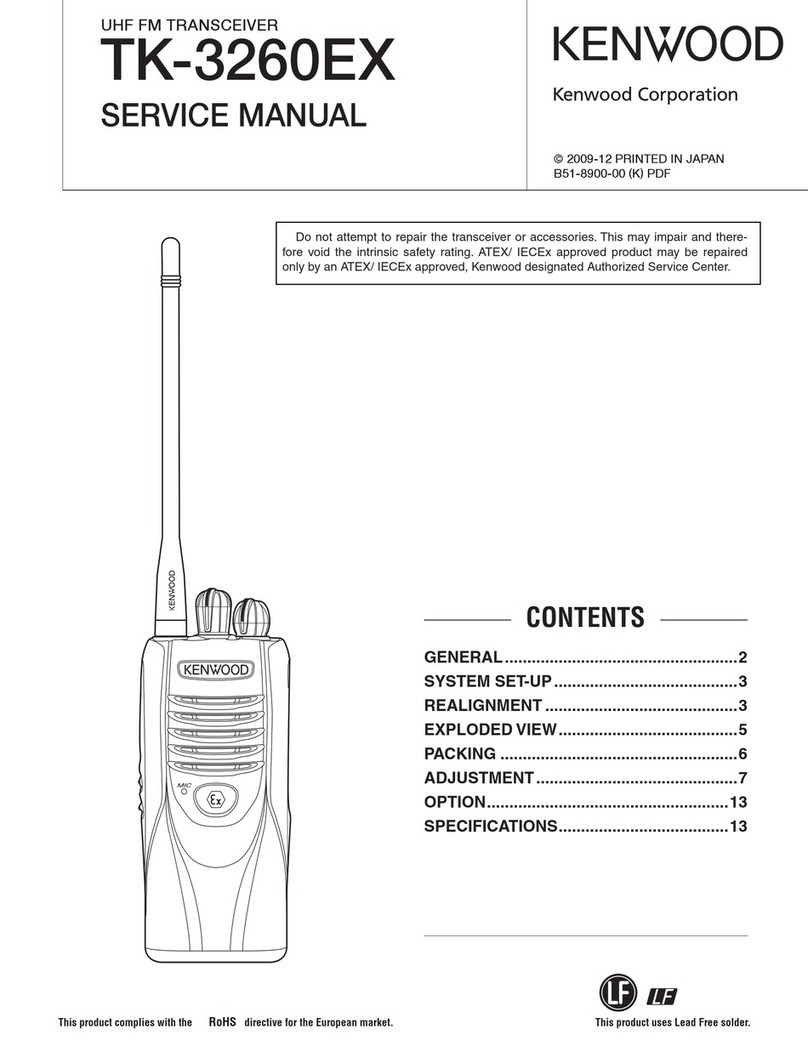
Kenwood
Kenwood TK-3260EX Service manual
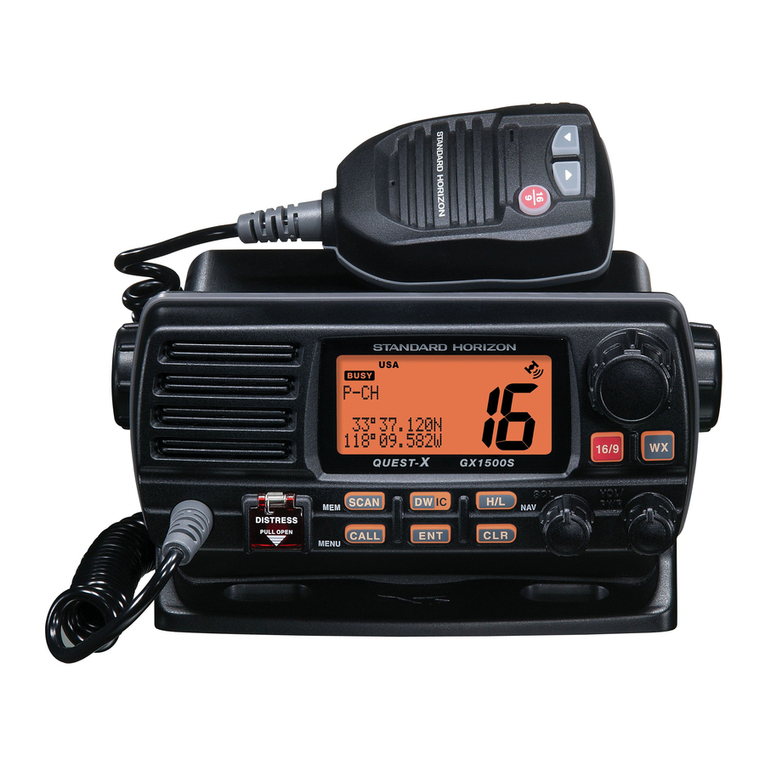
Standard Horizon
Standard Horizon Quest-X GX1500S Service manual
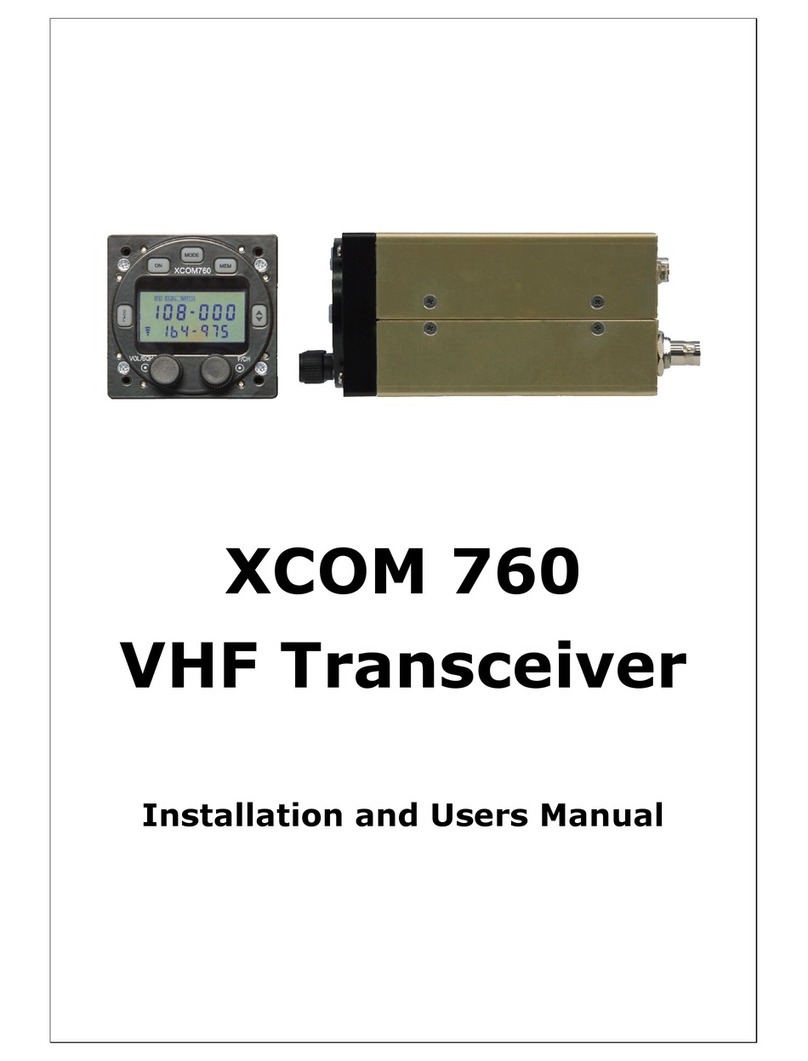
XCOM
XCOM 760 Installation and user manual

City Theatrical
City Theatrical SHoW DMX SHoW Baby 6 quick start guide
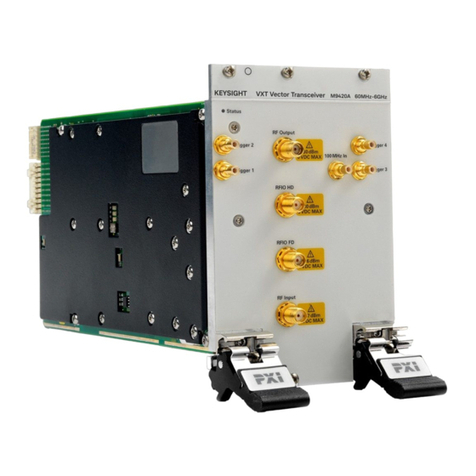
Keysight
Keysight M9420A manual
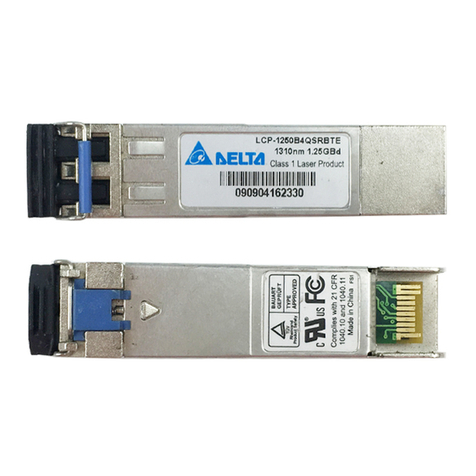
Delta Electronics
Delta Electronics Multi-Rate CWDM SFP Transceiver LCP-1250... specification
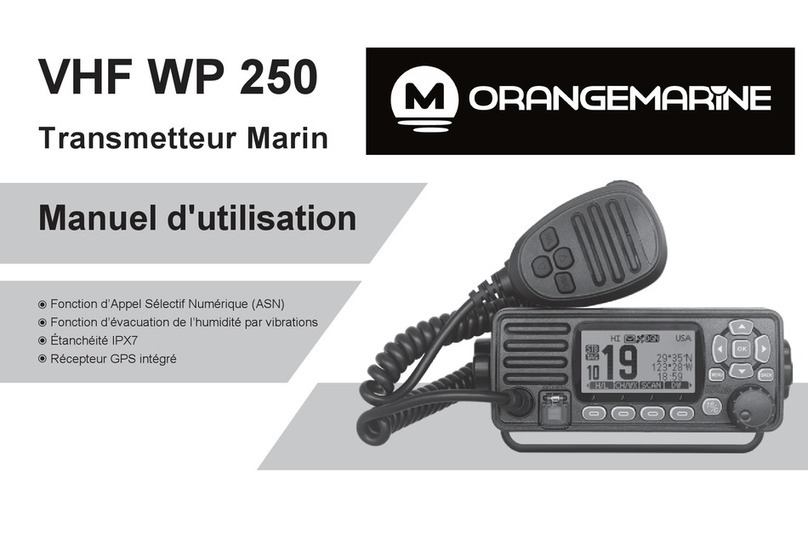
orangemarine
orangemarine VHF WP 250 instruction manual
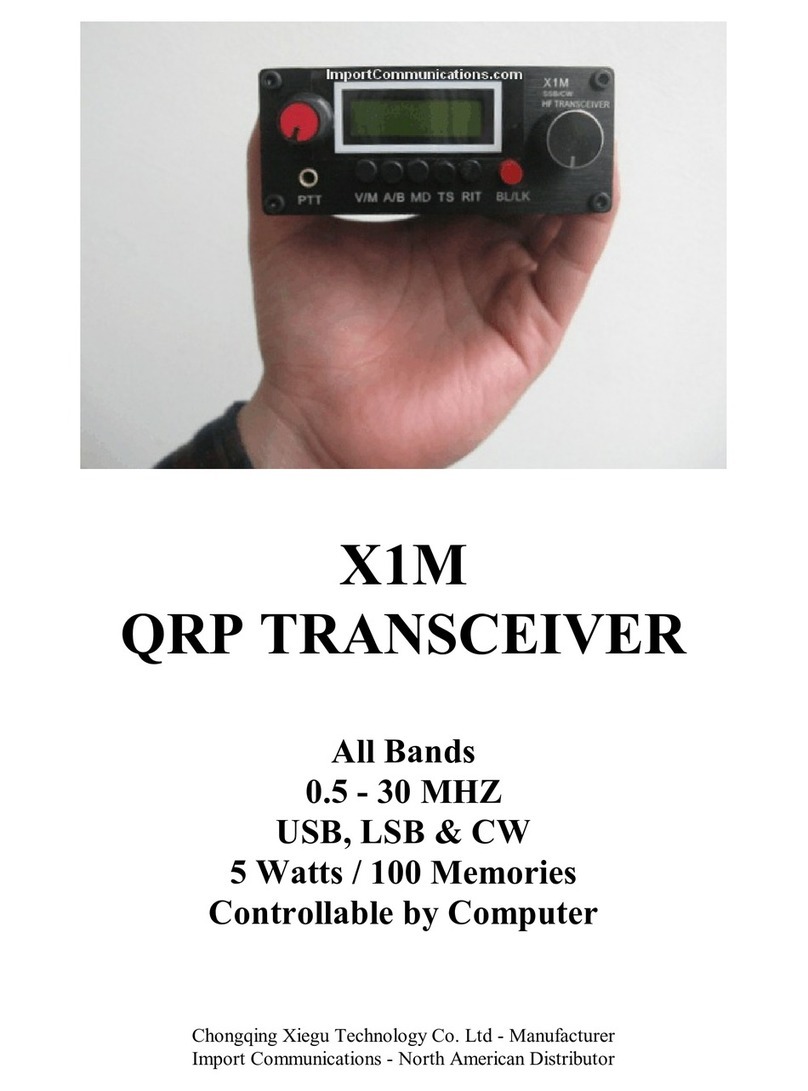
Chongqing Xiegu Technology
Chongqing Xiegu Technology X1M manual
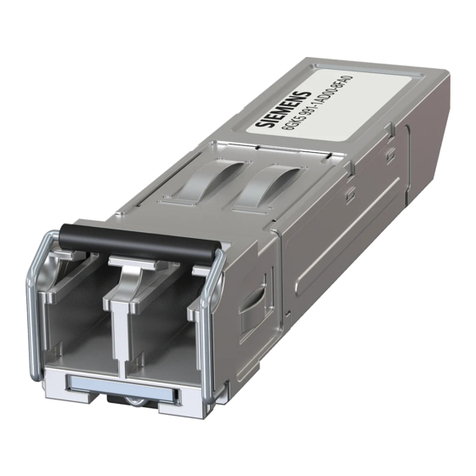
Siemens
Siemens SIMATIC NET SFP Series operating instructions
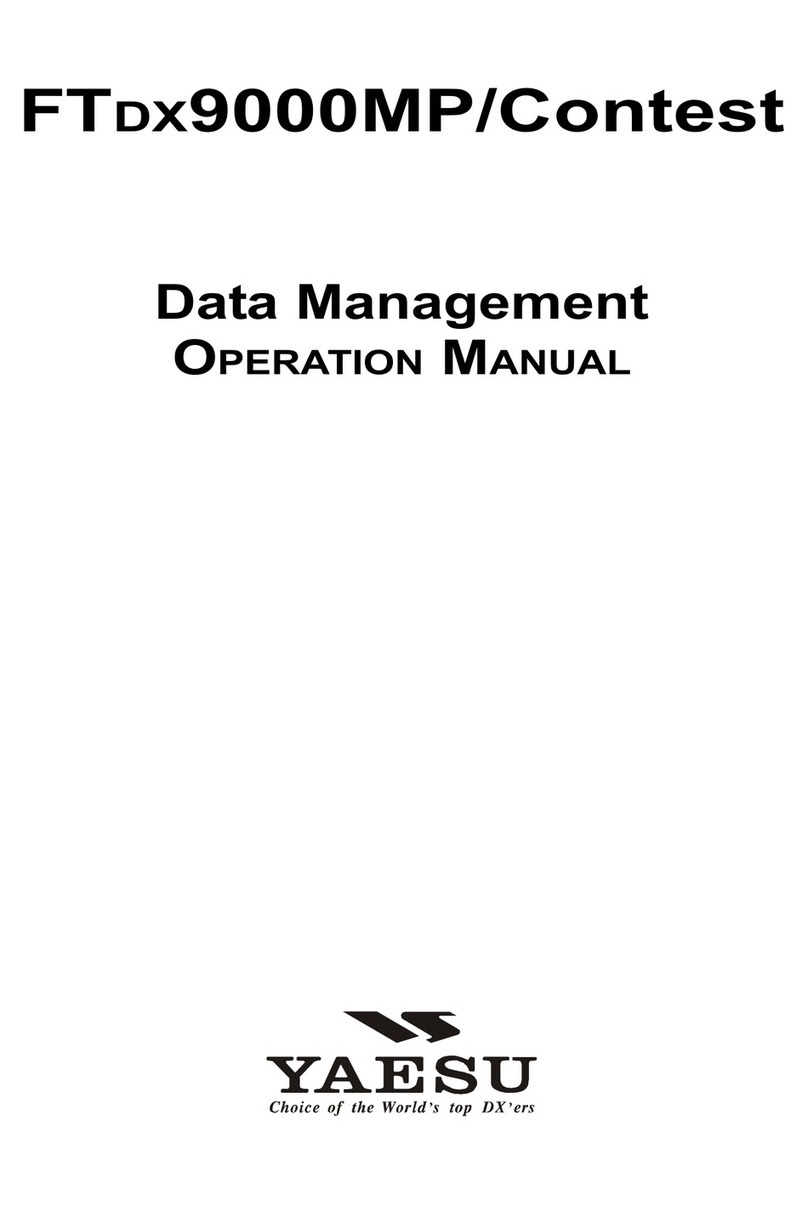
Yaesu
Yaesu FTDX-9000MP Operation manual

Kenwood
Kenwood TK-2200L instruction manual
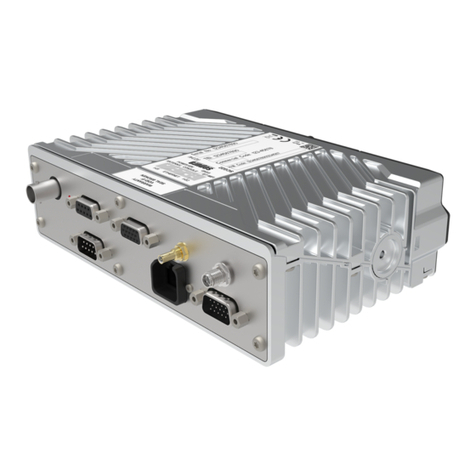
Sepura
Sepura SCG22 Series installation guide
